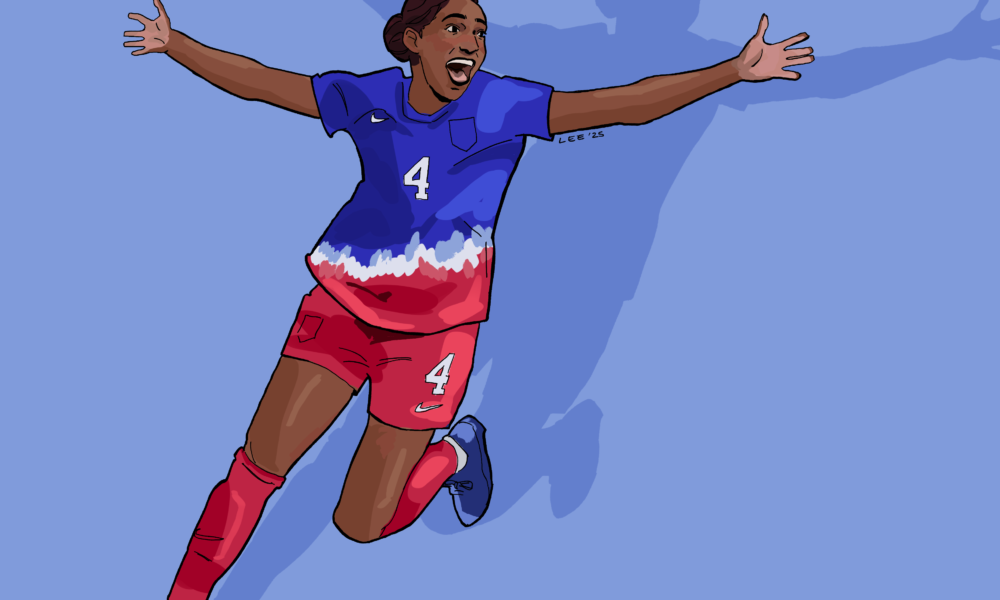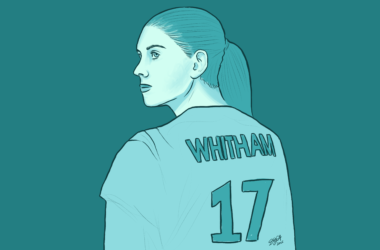Naomi Girma just made history—and her bank account is very, very happy. The 24-year-old U.S. Women’s National Team (USWNT) defender became the first million-pound player in women’s soccer, sealing the record-breaking €1.07 million transfer from San Diego Wave to Chelsea Women on Jan. 26. A seven-figure move in a sport where, until recently, teams were debating whether they could afford charter flights, is no small shift.
This achievement is not just a win for Girma, Chelsea, or women’s soccer bankrollers. In a sport that has historically struggled with diversity, the first player to smash this financial ceiling is a Black woman. Not only does this deal set a new financial benchmark, but it also holds profound cultural and social implications for the posterity of a white-dominated sport.
Especially in countries like the U.S. and England, women’s soccer has been predominantly white and upper-class in recent years. Factors such as the pay-to-play model in U.S. youth sports have often limited access for underrepresented communities, leading to an insistent white majority. In England, the shift of training facilities to suburban areas has made participation challenging for low-income girls, further contributing to the homogeneity of the player base. The phenomenon has also been noted in other league pairs, such as the National Basketball Association (NBA) and the Women’s National Basketball Association (WNBA).
In contrast, men’s soccer hosts many more players from diverse backgrounds at all levels, from Emmanuel Boateng to Neymar. This is due in part to the charity and funding that flows into the sport regularly. The Fédération Internationale de Football Association (FIFA), is one of the wealthiest sports organizations globally. As of the end of 2022, FIFA’s balance sheet totalled approximately $6.8 billion USD, with reserves reaching an unprecedented high of $3.97 billion USD. Nearly all of this revenue comes from and goes back into the men’s game, which allows for diverse developmental pathways and greater accessibility at a grassroots level.
In this context, Girma’s ascent to becoming the first million-pound player in women’s soccer is particularly significant. Her success challenges the existing norms, and her visibility at the highest levels of the sport may inspire young athletes to follow in her footsteps. This landmark deal not only underscores Girma’s exceptional talent but also signifies the growing investment and recognition in women’s soccer.
Girma’s move to Chelsea should (and hopefully will) be a wake-up call for clubs around the world. Investing in women’s soccer is not just equitable—it’s good business. The level of play is rising, audiences are growing, and, as this transfer proves, top players are becoming assets—ones worth spending big on.
More importantly, this moment should push youth development systems to rethink how they nurture talent. No more forcing kids to pay thousands for elite academy access. No more structuring pathways that make it nearly impossible for working-class or non-white players to succeed. The game should belong to everyone.
Efforts to promote diversity in women’s soccer are gaining momentum. Initiatives like England Football’s “Discover My Talent” campaign seem to be doing more and more to provide opportunities for girls from all socioeconomic backgrounds. However, as always, challenges such as the costs, time commitments, and accessibility of training facilities persist—but trailblazers such as Girma illustrate that it’s possible to take down these barriers.
It is important not to forget Chelsea in all this. Sonia Bompasto’s squad has bagged a world-class defender who will be crucial in their hunt for silverware. But even beyond her impressive story, Girma’s signing makes Chelsea part of history—a club being willing to break records for a defender is always progress worth celebrating.









